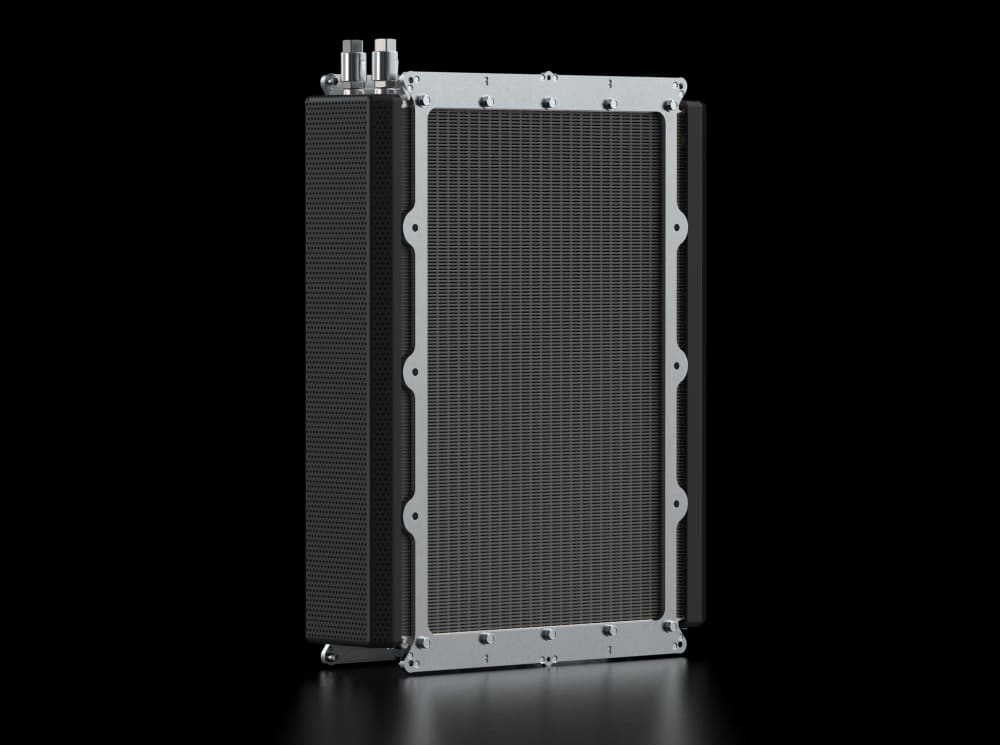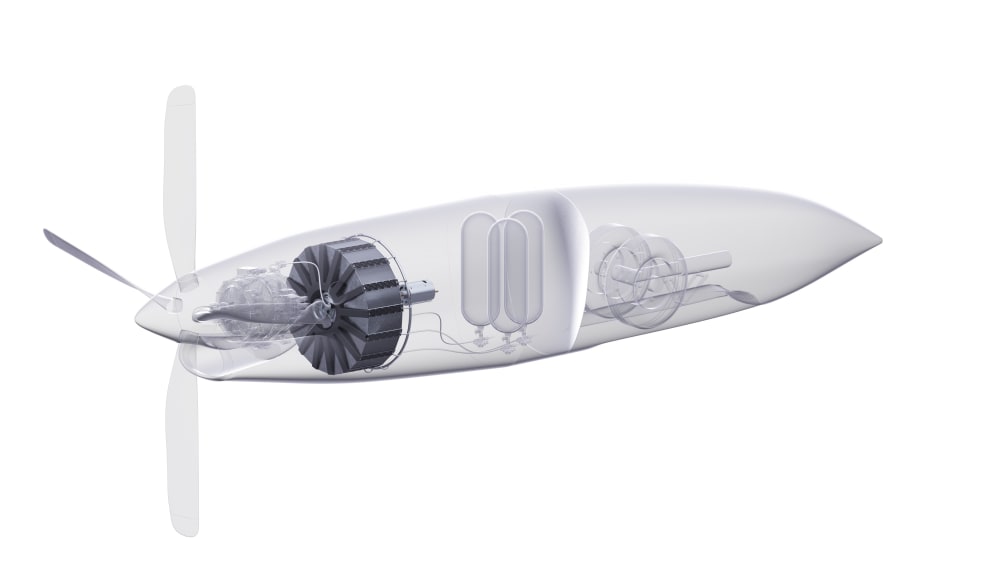
HyPoint's NASA award-winning fuel cell technology, developed by an international team of scientists and engineers, delivers an unprecedented combination of specific power and energy density. Testing has shown that HyPoint's turbo air-cooled hydrogen fuel cell system will be able to achieve up to 2,000 watts per kilogram of specific power, which is more than triple the power-to-weight ratio of traditional hydrogen fuel cells systems. It will also boast up to 1,500 watt-hours per kilogram of energy density, enabling longer-distance journeys.
HyPoint's revolutionary approach utilizes compressed air for both cooling and oxygen supply to deliver a high-temperature (HTPEM) fuel cell system that is three times lighter than comparable liquid-cooled low-temperature (LTPEM) fuel cell systems. The HyPoint team discovered a way to increase air-cooled FC system power output without an essential loss of efficiency by circulating air at high-pressure through a fuel cell stack and recirculating the exhaust air. Supplying exhaust air to another stack inlet saves energy otherwise spent on compressing fresh air. As long as the air contains sufficient oxygen, it can be reused. Traditional LTPEM FCs require heavy cooling systems, but using HTPEM FCs instead of traditional ones allows us to develop a lightweight, efficient cooling system. As established, using air-cooling instead of liquid-cooling reduces the weight of FCs and subsystems. Next, supplying compressed air increases the power produced by the FC system, and the increase in power significantly overrides the cost of compressing the air. Combining these weight-reducing and power-boosting techniques, HyPoint has been able to achieve specific power of a fuel cell at system level (stack + BoP, including cooling system) > 2,000 W/kg.
It also leverages a number of technical innovations including lightweight bipolar plates and a highly conductive, corrosion-resistant coating in order to radically outperform existing systems. By addressing these core technological barriers, HyPoint will cut years off commercial delivery timelines for hydrogen aircraft and unlock the emerging hydrogen aviation market, which is expected to be valued at more than $27 billion in 2030 and at least $174 billion by 2040, according to Allied Market Research. Full-scale versions, which are expected to begin shipping in 2022, will drive the commercial development of zero-emission e-aircraft, eVTOL, and urban air mobility vehicles, and serve an important role in the global effort to curb carbon emissions. As a result, HyPoint can deliver up to a 50% reduction in total cost of ownership for aircraft and air mobility makers and empower them to create practical, cost-effective zero-emission vehicles.
-
Awards
-
 2022 Top 100 Entries
2022 Top 100 Entries
Like this entry?
-
About the Entrant
- Name:Alex Ivanenko
- Type of entry:individual
- Patent status:pending





